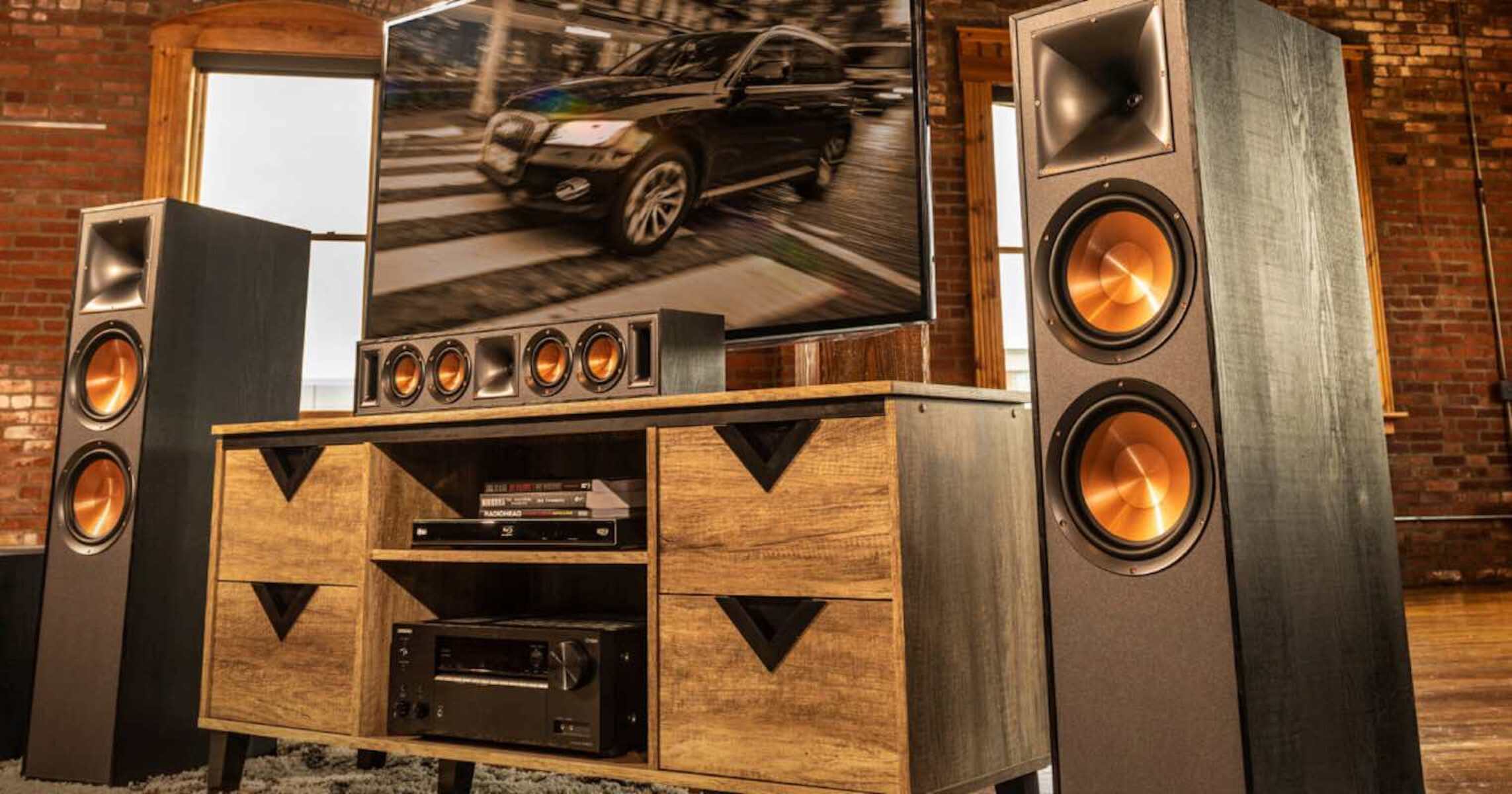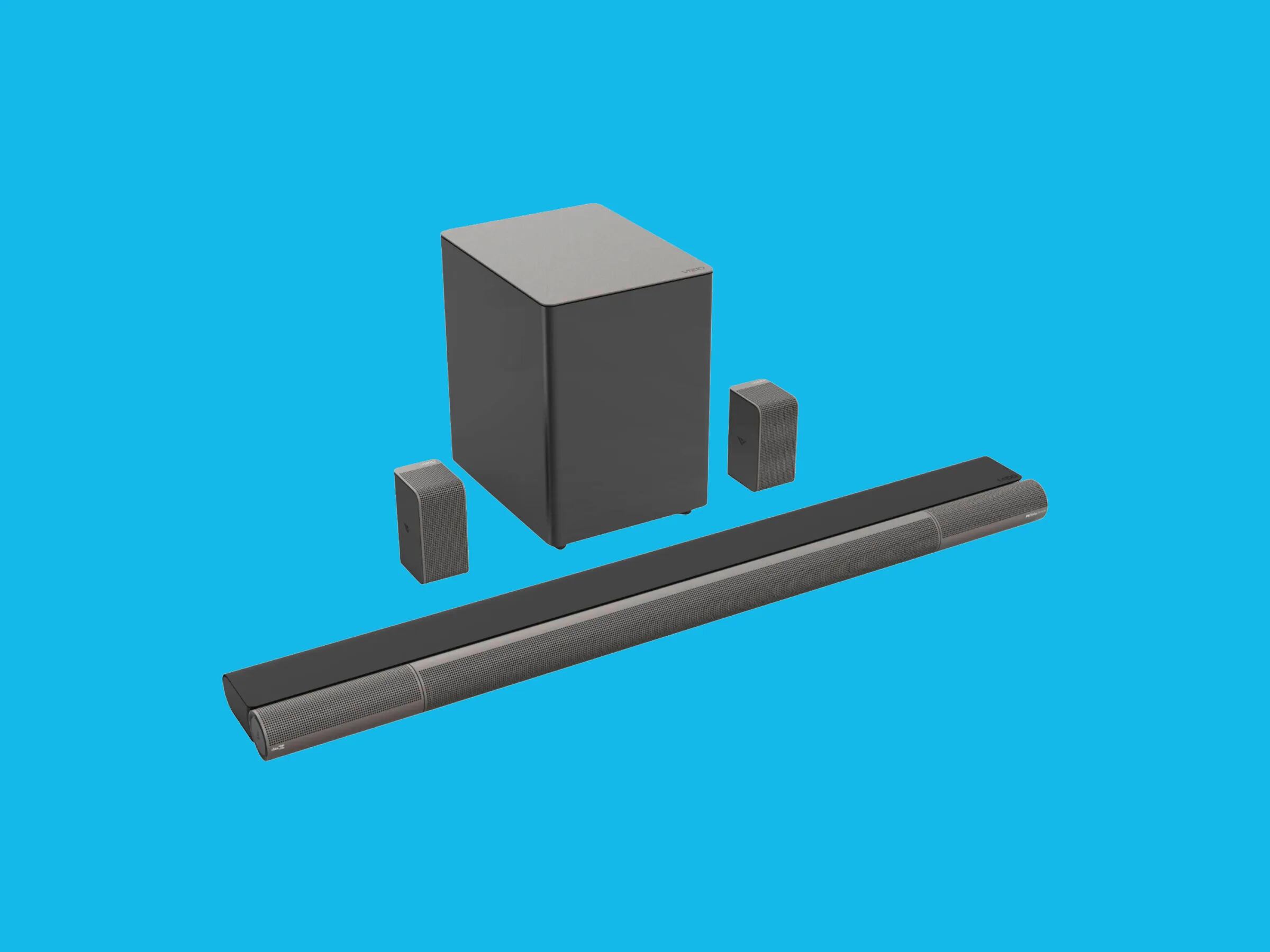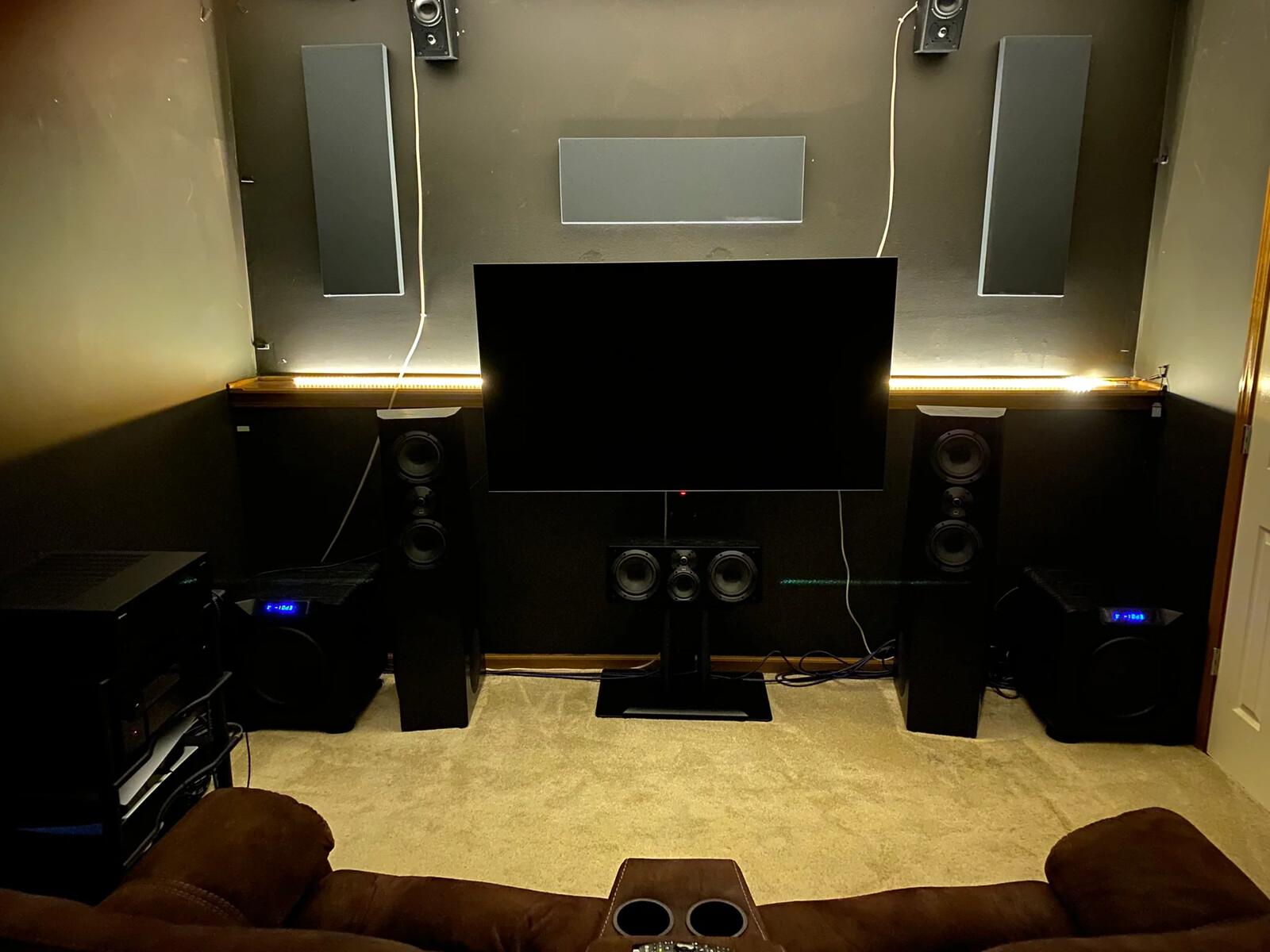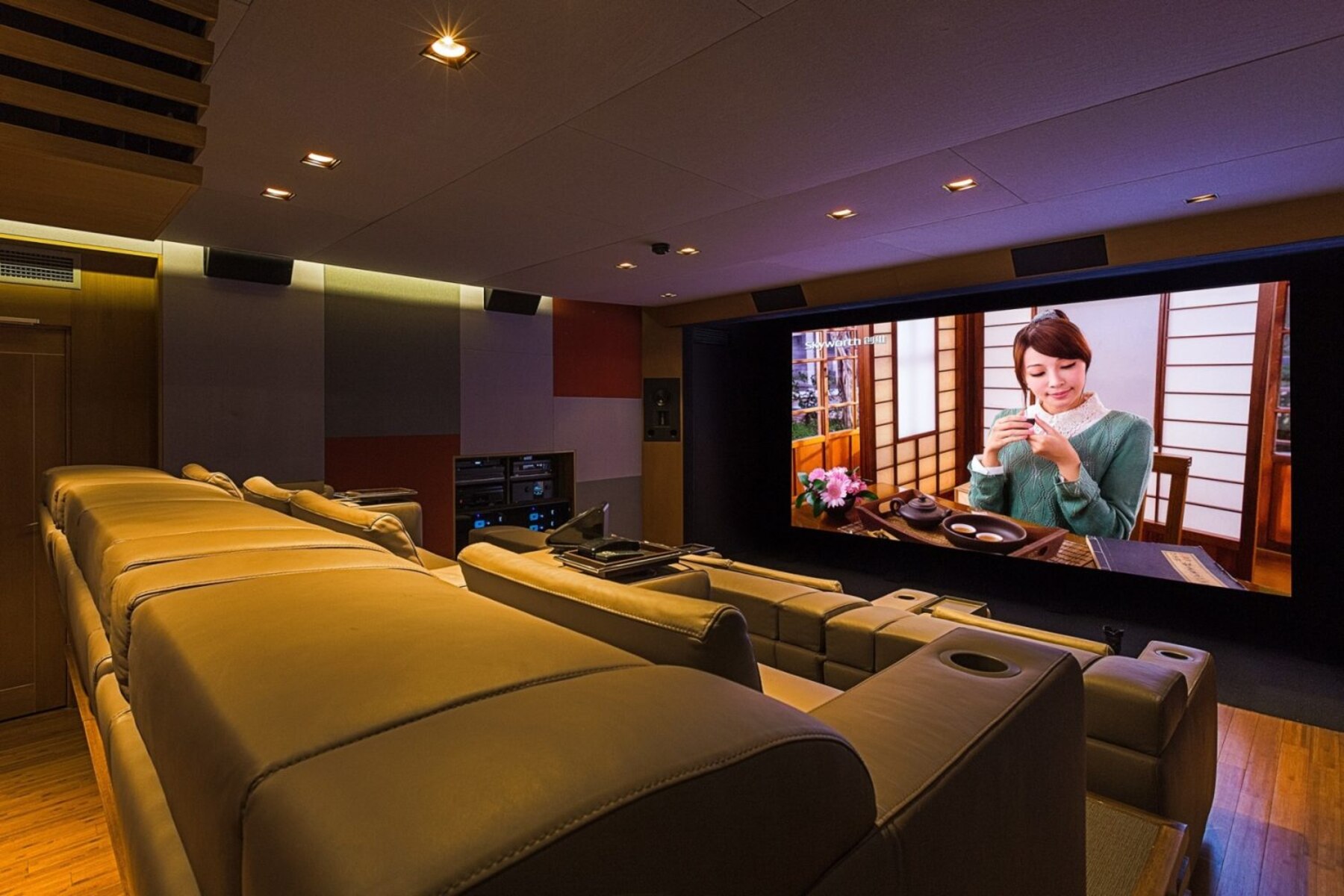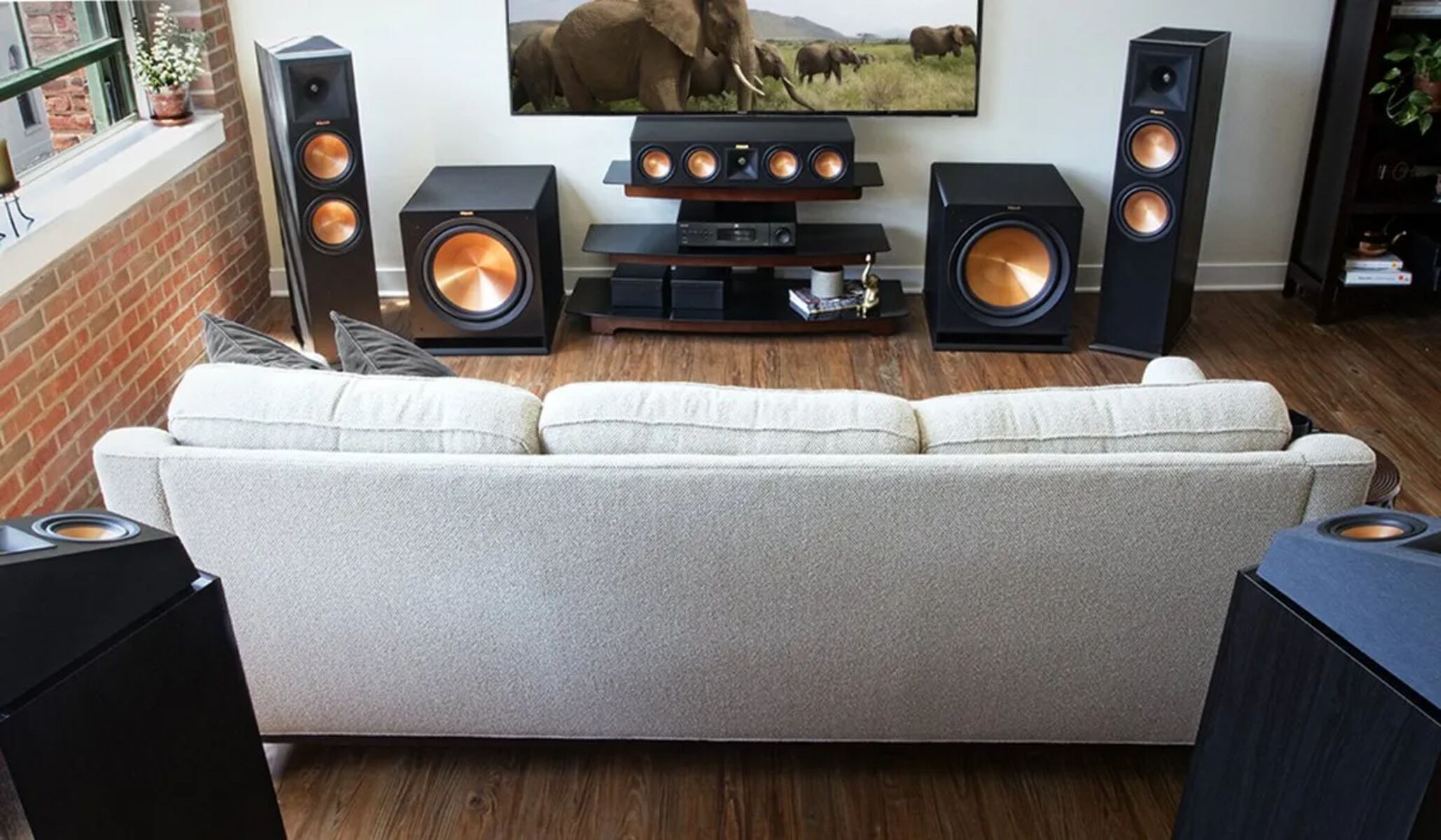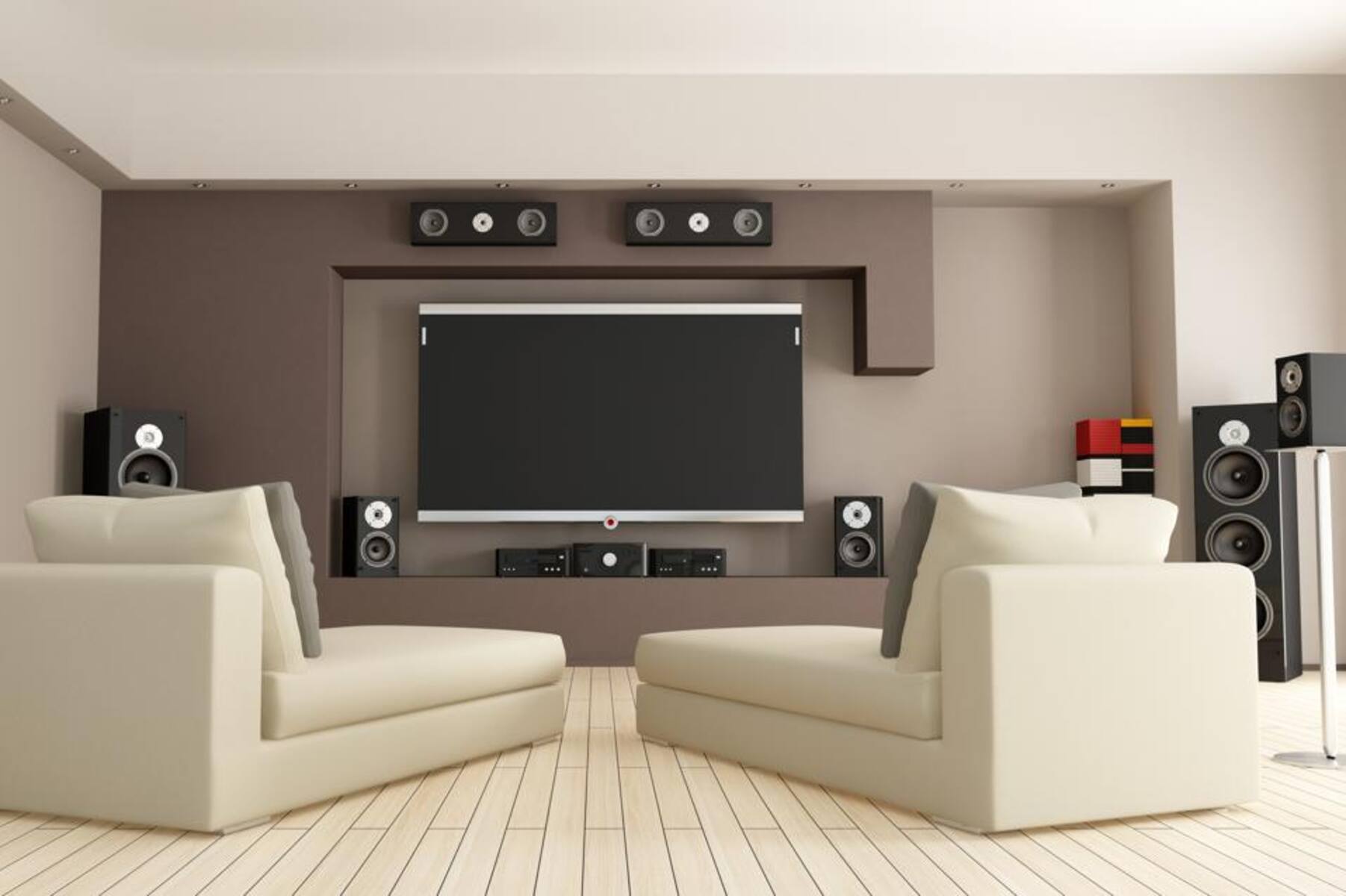Introduction
When it comes to creating an immersive home theater experience, a surround sound system is a must-have. Whether you’re watching your favorite movies, playing video games, or listening to music, a high-quality audio setup can make all the difference in bringing the action and sound to life. But to get the most out of your surround sound system, you need an audio receiver that can handle the complex task of processing and distributing audio signals to your speakers.
An audio receiver is the central hub that connects all your audio components, such as your Blu-ray player, game console, and speakers, allowing them to work together seamlessly. It decodes the audio signals and amplifies them, delivering clear and powerful sound to each speaker in your setup. However, there are different types of audio receivers designed to cater to different needs and preferences. Understanding these different types will help you make an informed decision when choosing the right audio receiver for your surround sound system.
In this article, we will walk you through the basics of audio receivers for surround sound systems, highlight the different types available in the market, and discuss the factors you need to consider before making a purchase. By the end, you will have a better understanding of the type of audio receiver that will best suit your needs and enhance your home theater experience.
Understanding Audio Receivers
Before diving into the different types of audio receivers available, it’s important to have a basic understanding of how they work. Essentially, an audio receiver acts as the central control unit for your surround sound system, connecting all the audio components and processing the audio signals.
Audio receivers come with built-in amplifiers that power the speakers in your setup. They receive audio signals from various sources, such as your TV, Blu-ray player, or gaming console, and decode them into separate channels. These channels correspond to the different speakers in your surround sound system, including the front speakers, the center speaker, the rear speakers, and the subwoofer.
In addition to decoding and amplifying the audio signals, audio receivers also offer various features and functionalities. These can include equalization options to fine-tune the sound, audio format compatibility, networking capabilities for streaming music, and connectivity options for different input and output devices.
Audio receivers are typically designed to support specific audio formats, such as Dolby Digital or DTS, which are common in surround sound systems. By decoding these formats, the receiver ensures that you get the full surround sound experience, with clear dialogue, immersive sound effects, and deep bass.
Additionally, audio receivers also handle video signals, making them compatible with your video sources, such as Blu-ray players or streaming devices. They often have HDMI inputs and outputs to seamlessly switch and route video signals to your TV or projector.
Overall, audio receivers play a crucial role in delivering high-quality audio and video signals to your speakers and display. Understanding how they work will help you navigate the different types of audio receivers and choose the one that best suits your needs and preferences.
Different Types of Surround Sound Systems
Surround sound systems come in various configurations, each designed to create a specific audio experience. Understanding the different types of surround sound systems will help you choose the right audio receiver that is compatible with your setup. Here are some of the most common types:
- 5.1 Surround Sound: This is the most popular and widely used surround sound configuration. It consists of five speakers – front left, front center, front right, rear left, and rear right – and one subwoofer. The “5” refers to the five main speakers, while the “1” represents the subwoofer, which enhances the low-frequency sounds, like explosions and deep bass.
- 7.1 Surround Sound: This system expands on the 5.1 setup by adding two additional rear speakers, making it a total of seven speakers and one subwoofer. The extra rear speakers provide enhanced surround sound effects, resulting in a more immersive audio experience.
- Dolby Atmos: Dolby Atmos takes the surround sound experience to a whole new level by introducing overhead speakers or upward-firing speakers. This technology creates a three-dimensional sound field, allowing sound to be positioned and moved in specific locations, including above the listener. It provides a truly immersive and realistic audio experience, making you feel like you’re in the middle of the action.
- DTS:X: Similar to Dolby Atmos, DTS:X is an immersive audio format that supports object-based audio. It allows for sound to be precisely placed and moved in a three-dimensional space, providing a highly realistic and dynamic audio experience.
- Stereo Sound: Although not technically a surround sound system, stereo sound still deserves a mention. It consists of two speakers – left and right. Stereo sound is perfect for smaller spaces or for those who prefer a simpler audio setup.
Each surround sound system has its own advantages and applications, depending on the size of your room, your audio preferences, and budget. Understanding the different configurations will help you determine the type of audio receiver that can handle the specific needs of your surround sound system.
Factors to Consider Before Buying an Audio Receiver
Choosing the right audio receiver for your surround sound system requires careful consideration of several factors. Here are some key points to keep in mind before making a purchase:
- Compatibility: Ensure that the audio receiver you choose is compatible with your audio and video sources. Check for the necessary inputs and outputs, such as HDMI, optical, and coaxial connections, to ensure seamless connectivity with your devices.
- Power and Amplification: Consider the power and amplification capabilities of the receiver. Look for a receiver that can deliver enough power to adequately drive your speakers and produce clear and immersive sound. Higher wattage and amplifier quality often result in better audio performance.
- Audio Formats: Verify that the receiver supports the audio formats you intend to use, such as Dolby Digital, DTS, or newer formats like Dolby Atmos and DTS:X. This ensures compatibility with your content sources and provides the best audio experience.
- Connectivity Options: Consider the number and types of connectivity options provided by the receiver. Look for features like built-in Wi-Fi, Bluetooth, and streaming services integration to easily connect and stream audio from various devices.
- Number of Channels: Determine how many speakers you plan to use in your surround sound system, and choose a receiver that supports the desired number of channels. Whether it’s a 5.1, 7.1, or more advanced system like Dolby Atmos, ensure that the receiver can accommodate the required speaker setup.
- User Interface and Ease of Use: Consider the user interface and ease of use of the receiver. Look for a receiver with a user-friendly interface, intuitive controls, and a clear display to make setup and adjustments hassle-free.
- Price and Budget: Set a realistic budget for your audio receiver and compare different models within that price range. Keep in mind that higher-priced receivers often offer more advanced features and better audio quality, but choose one that suits your needs and budget.
- Reviews and Recommendations: Read reviews and seek recommendations from trusted sources or other users to get a better understanding of the performance and reliability of the receiver you are considering. This will help you make an informed decision.
By considering these factors, you can narrow down your options and choose an audio receiver that meets your specific requirements, ensuring optimal compatibility, functionality, and audio performance for your surround sound system.
Types of Audio Receivers for Surround Sound Systems
There are several types of audio receivers available in the market, each with its own set of features and functionalities. Understanding the different types will help you make an informed decision when selecting the right audio receiver for your surround sound system. Here are some of the most common types:
- Stereo Receivers: Stereo receivers are the most basic type of audio receivers. They are designed for two-channel audio setups and are suitable for small spaces or users who prefer a simple audio configuration. While they lack the advanced features of other receivers, they still deliver high-quality stereo sound.
- AV Receivers (Audio/Video Receivers): AV receivers are the most versatile and commonly used type of audio receivers for surround sound systems. They support multiple audio channels and have built-in amplifiers to power the speakers. AV receivers also provide video switching capabilities, allowing you to connect multiple video sources and switch between them seamlessly.
- Network Receivers: Network receivers are similar to AV receivers but come with additional networking features. These receivers have built-in Wi-Fi and Ethernet connectivity, enabling you to stream music, play online content, and access streaming services directly from the receiver. Network receivers are ideal for users who want to connect and control their audio system wirelessly.
- Home Theater Receivers: Home theater receivers are designed specifically for home theater setups. They feature advanced audio processing technologies and support surround sound formats such as Dolby Atmos and DTS:X. Home theater receivers often come with additional features like automatic room calibration and support for multiple zones, allowing you to create a custom audio experience in different areas of your home.
- AV Preamp/Processors: AV preamp/processors are advanced audio processing units that provide the utmost flexibility and customization. They lack built-in amplifiers, making them suitable for users who already have external power amps. AV preamp/processors deliver superior audio performance and are often used in high-end home theater setups.
Each type of audio receiver has its own advantages and is suited for different budgets and requirements. Consider the features, audio formats supported, connectivity options, and your specific needs when selecting the right type of audio receiver for your surround sound system.
Stereo Receivers
Stereo receivers are the most basic type of audio receivers, designed for two-channel audio setups. They are a popular choice for users who prefer a simple audio configuration or have limited space. Despite their simplicity, stereo receivers deliver high-quality stereo sound and can be a cost-effective option for those on a tight budget.
Stereo receivers typically come with built-in amplifiers that power two speakers, creating a left and right channel. They offer basic connectivity options, including analog audio inputs for connecting devices like CD players, turntables, and media players. Some stereo receivers also feature Bluetooth or Wi-Fi connectivity, allowing wireless streaming from compatible devices.
While stereo receivers lack the advanced features found in other types of audio receivers, they provide a straightforward solution for listening to music or enjoying stereo sound from movies and TV shows. They are easy to set up and operate, making them an excellent choice for beginners or casual users.
Despite their simplicity, stereo receivers can still deliver impressive sound quality. They often include basic sound adjustment features like tone controls or equalizers, allowing you to adjust the audio to suit your preferences. The built-in amplifiers provide enough power to drive most bookshelf or floor-standing speakers, delivering clear and dynamic sound.
One advantage of stereo receivers is their versatility. They can be used not only for music playback but also for enhancing the audio experience while watching TV shows or movies. However, it’s important to note that stereo receivers do not support true surround sound formats like Dolby Atmos or DTS:X. If you’re looking for a more immersive audio experience, you may need to consider other types of audio receivers.
In summary, stereo receivers are an affordable and straightforward option for users who want a basic two-channel audio setup. They offer good sound quality, ease of use, and flexibility for various audio sources. However, if you’re seeking advanced features or a true surround sound experience, you may need to explore other types of audio receivers.
AV Receivers (Audio/Video Receivers)
AV receivers, also known as audio/video receivers, are the most versatile and commonly used type of audio receivers for surround sound systems. They are designed to handle multiple audio channels and provide seamless integration with various audio and video sources, making them a popular choice among home theater enthusiasts.
An AV receiver serves as the central hub of your audio and video setup, providing a range of features and functionalities. It typically includes built-in amplifiers that power multiple speakers, allowing for immersive surround sound experiences. AV receivers support different surround sound formats, such as Dolby Digital and DTS, ensuring compatibility with various media sources.
In addition to audio capabilities, AV receivers have video switching capabilities. They are equipped with multiple HDMI inputs and outputs, allowing you to connect multiple video sources like Blu-ray players, gaming consoles, and streaming devices. With an AV receiver, you can easily switch between different video sources without the need for separate switchers or additional cables.
Another advantage of AV receivers is their ability to handle audio and video upscaling. They can upscale lower-resolution video signals to match the resolution of your TV or projector, providing a better viewing experience. Some AV receivers also support HDR (High Dynamic Range) and Dolby Vision, enhancing the color and contrast of your video content.
AV receivers offer a wide range of connectivity options, including analog and digital audio inputs, USB ports, Bluetooth, and Wi-Fi. This allows you to connect various devices and stream music wirelessly from your compatible devices. Many AV receivers also come with advanced features like automatic room calibration, which adjusts the audio settings based on your room’s acoustics.
With their versatility and advanced features, AV receivers are suitable for all types of audio and video setups. Whether you want to create a dedicated home theater system or a multi-room audio setup, an AV receiver provides the flexibility and control you need.
While AV receivers offer numerous benefits, they can be more complex to set up and operate compared to stereo receivers. They often come with a learning curve due to their extensive features and settings. However, once properly configured, they provide a powerful and immersive audio-visual experience that elevates your home entertainment.
In summary, AV receivers are the go-to choice for those seeking a versatile and feature-rich audio solution. With their support for multiple audio channels, video switching capabilities, and various connectivity options, AV receivers offer the ultimate control and flexibility for your surround sound system.
Network Receivers
Network receivers are a type of audio receiver that combines the functionalities of AV receivers with added networking capabilities. These receivers are designed to provide seamless integration with your home network and offer convenient wireless streaming options for your audio content.
One of the main advantages of network receivers is their ability to connect to your Wi-Fi or Ethernet network. This allows you to easily access various streaming services, such as Spotify, Pandora, or Apple Music, directly from your receiver. With network connectivity, you can enjoy a wide range of online music content and podcasts without the need for additional devices.
In addition to streaming services, network receivers often support streaming audio from your mobile devices or computers. They can connect to your smartphones, tablets, or laptops via Bluetooth or Wi-Fi, allowing you to play your favorite music directly from your personal library or streaming platforms.
Furthermore, network receivers often provide built-in support for popular audio formats, internet radio, and even podcasts. This means you can explore a world of online radio stations and podcasts from around the globe, expanding your audio entertainment horizons.
Another perk of network receivers is their ability to be controlled remotely. Many models come with dedicated mobile apps that allow you to control the receiver settings, adjust audio settings, and select the audio source from the convenience of your smartphone or tablet. This gives you greater flexibility and freedom to manage your audio system from anywhere in your home.
When choosing a network receiver, it’s important to ensure that it is compatible with your home network and the specific streaming services you prefer. Check for compatibility with your Wi-Fi standards, audio formats, and supported streaming platforms.
It’s worth noting that network receivers tend to be more expensive than standard AV receivers due to their added features and networking capabilities. However, for those who want the convenience of wireless audio streaming and access to online music services, the investment may be well worth it.
Overall, network receivers provide a seamless and convenient way to stream and enjoy your favorite audio content from various sources. Their network connectivity, support for streaming services, and remote control capabilities make them an excellent choice for users who want to explore a world of online audio entertainment.
Home Theater Receivers
Home theater receivers are specifically designed to deliver an immersive audio experience in a dedicated home theater setup. These receivers offer advanced audio processing technologies and support for various surround sound formats, making them a popular choice for home theater enthusiasts.
One of the key features of home theater receivers is their ability to support advanced surround sound formats like Dolby Atmos and DTS:X. These formats create a three-dimensional sound field, allowing sound to be precisely positioned and moved in a room, including overhead. This creates a more realistic and immersive audio experience where you feel surrounded by the sound.
Home theater receivers also come with built-in amplifiers that deliver ample power to drive multiple speakers, such as front speakers, center channel speakers, surround speakers, and subwoofers. This allows you to create a fully immersive surround sound system with precise audio distribution across all the speakers.
In addition to surround sound capabilities, home theater receivers often offer advanced audio processing technologies like room calibration. These systems use built-in microphones and sophisticated algorithms to analyze your room’s acoustics and automatically adjust the audio settings. This ensures optimal sound performance tailored to your specific space.
Home theater receivers also provide multiple HDMI inputs and outputs, enabling seamless connectivity with your audio and video sources. They support 4K resolution, HDR (High Dynamic Range), and Dolby Vision, ensuring high-quality video playback. With video upscaling capabilities, they can enhance the resolution of lower-quality video sources to match the capabilities of your display device.
Another notable feature of home theater receivers is the ability to create multi-zone audio setups. Some receivers allow you to connect additional speakers and distribute audio to different areas of your home, providing a consistent audio experience throughout multiple rooms.
Since home theater receivers are packed with advanced features and technologies, they often come at a higher price point than other types of receivers. However, for those seeking a truly immersive home theater experience, investing in a home theater receiver can greatly enhance the audio performance and overall enjoyment.
In summary, home theater receivers are tailored for dedicated home theater setups, offering advanced surround sound capabilities, powerful amplification, video upscaling, room calibration, and support for advanced audio formats. They are the perfect choice for cinephiles and audio enthusiasts who want a truly immersive audio experience in their home theaters.
AV Preamp/Processors
AV preamp/processors are advanced audio processing units that offer unparalleled flexibility and customization for high-end audio setups. Unlike other types of receivers, AV preamp/processors do not include built-in amplifiers, making them ideal for users who already have external power amps or who want to build a fully customized audio system.
AV preamp/processors are designed to deliver exceptional audio performance, supporting the latest surround sound formats like Dolby Atmos and DTS:X. They offer advanced audio processing capabilities, allowing for precise sound placement and reproduction. With their advanced DSP (Digital Signal Processing) technology, these processors can create a highly realistic soundstage and immersive audio experience.
One of the main advantages of AV preamp/processors is their compatibility with external power amplifiers. By using separate amplifiers, you have more control over the power and performance of your audio system, enabling you to achieve the desired audio quality and tailor the power distribution to your speakers.
AV preamp/processors often come equipped with an array of audio inputs and outputs, allowing for seamless connectivity with various audio sources and amplifiers. They typically offer digital and analog audio inputs, ensuring compatibility with a wide range of devices. Some AV preamp/processors also feature advanced connectivity options like balanced XLR connections, which offer better noise rejection and audio signal quality.
Another advantage of AV preamp/processors is their customization options. These processors often provide extensive audio configuration settings, allowing you to fine-tune the audio output to suit your specific preferences. This includes adjusting crossover frequencies, equalization settings, and speaker distance calibration for optimal audio performance in your listening environment.
AV preamp/processors are designed for the most discerning audio enthusiasts who demand the highest audio quality and customization options. They are commonly used in dedicated home theaters or high-end audio setups where every detail and nuance of the audio playback matters.
It’s important to note that AV preamp/processors can be more complex to set up and operate compared to other types of receivers. They require careful consideration of audio equipment compatibility, configuration settings, and proper calibration for optimal performance. However, for audiophiles and home theater enthusiasts who prioritize audio quality and customization, the extra effort is undoubtedly worth it.
In summary, AV preamp/processors provide unmatched audio performance and customization options for high-end audio setups. By leveraging external power amplifiers and advanced audio processing, they deliver a pristine audio experience, making them the go-to choice for those who demand the utmost audio quality and flexibility in their setups.
Conclusion
Choosing the right audio receiver for your surround sound system is crucial in achieving the best audio experience in your home theater or entertainment setup. By understanding the different types of audio receivers available and considering the factors that are important to you, you can make an informed decision that caters to your specific needs and preferences.
Whether you opt for a stereo receiver for a simple two-channel setup, an AV receiver for versatility and video switching capabilities, a network receiver for seamless wireless streaming, a home theater receiver for immersive surround sound, or an AV preamp/processor for the ultimate customization, each type offers advantages and features to enhance your audio experience.
When selecting an audio receiver, consider its compatibility with your audio and video sources, power and amplification capabilities, supported audio formats, connectivity options, user interface, and budget. Additionally, reading reviews and seeking recommendations can provide valuable insights into the performance and reliability of different models.
Remember, investing in a high-quality audio receiver can significantly enhance your home entertainment experience, bringing movies, music, and games to life with clear and immersive sound. Take the time to research and choose the right audio receiver that caters to your specific needs, and enjoy a truly captivating audio experience in your home.







